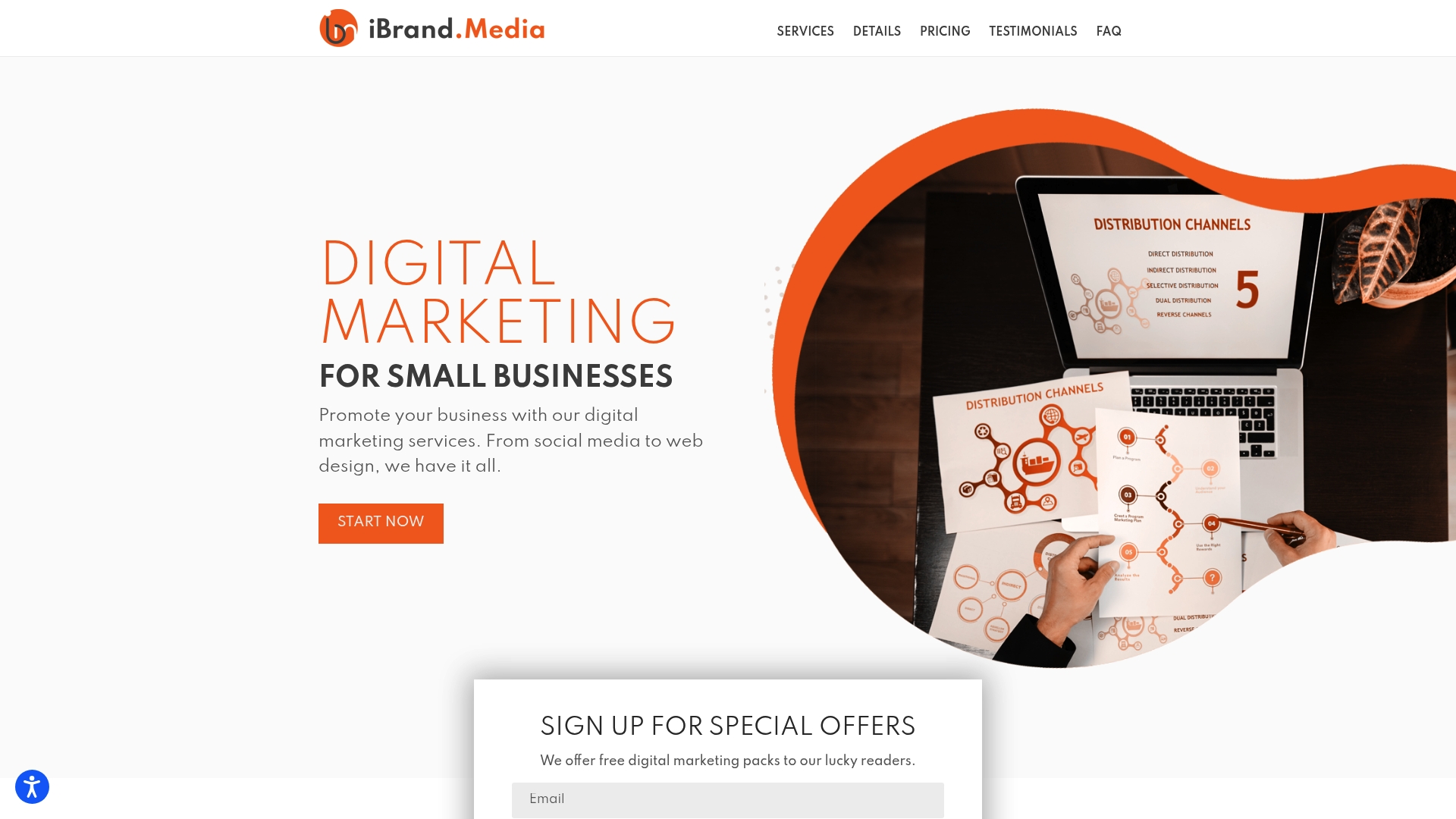Setting business goals online sounds straightforward and yet most businesses fail to track where they actually stand before they dive in. A recent study shows that companies using regular progress tracking are over 70% more likely to reach their objectives. You might think setting vague goals is enough but the real magic happens when you turn hard numbers and honest assessments into smart, practical strategies that actually move the needle.
Table of Contents
- Step 1: Assess Your Current Business Position
- Step 2: Define Clear and Specific Business Goals
- Step 3: Create An Action Plan For Implementation
- Step 4: Utilize Digital Tools To Track Progress
- Step 5: Review And Adjust Your Goals Regularly
Quick Summary
| Key Point | Explanation |
|---|---|
| 1. Assess Your Current Position | Conduct a self-audit of your business’s digital presence and performance metrics. Understand strengths and weaknesses to inform goal setting. |
| 2. Set SMART Goals | Establish specific, measurable, achievable, relevant, and time-bound objectives based on your assessment to drive online success. |
| 3. Develop an Action Plan | Break down business goals into manageable steps with clear responsibilities, deadlines, and performance indicators for accountability. |
| 4. Utilize Digital Tracking Tools | Employ tools that provide real-time insights into performance metrics, enabling data-driven decisions and timely adjustments. |
| 5. Review and Adjust Regularly | Implement a structured review schedule to evaluate goals, adapt strategies based on performance indicators, and remain responsive to changes. |
Step 1: Assess Your Current Business Position
Successfully setting business goals online starts with a critical foundation: understanding exactly where your business currently stands. This initial assessment provides the strategic roadmap for transforming your digital presence and developing meaningful, achievable objectives.
Begin by conducting a comprehensive self-audit of your current business performance. This means examining your existing digital assets, analyzing your online performance metrics, and identifying both strengths and potential improvement areas. Financial records, website analytics, and customer interaction data become your most valuable resources during this exploration.
Start by gathering key performance indicators from your digital platforms. Review website traffic statistics, social media engagement rates, conversion metrics, and current revenue streams. Learn more about building your online brand strategy to complement this assessment. Pay special attention to metrics that reveal how customers currently interact with your online presence.
Your assessment should include a thorough review of several critical components:
- Current digital marketing channels and their effectiveness
- Existing online customer acquisition strategies
- Performance of your website and digital platforms
- Revenue generated through online channels
- Customer feedback and interaction patterns
During this evaluation, be brutally honest about your current capabilities. Recognize both your operational strengths and the areas requiring significant improvement.
Below is a checklist table to verify the key components you should evaluate during your business self-assessment before setting online goals.
| Assessment Area | What to Check For | Verified (Yes/No) |
|---|---|---|
| Digital Marketing Channels | Which platforms are used and their impact | |
| Customer Acquisition Strategies | Effectiveness in attracting new customers | |
| Website & Digital Platform Performance | Site speed, UX, and engagement metrics | |
| Online Revenue Streams | Amount and diversity of revenue sources | |
| Customer Feedback & Interactions | Volume, tone, and trends in feedback | |
| Financial Records | Profitability and key online expenses | |
| Industry Benchmark Comparison | How your metrics stack up against industry |
To validate your assessment, confirm you have concrete data supporting each aspect of your business performance. Quantitative evidence transforms subjective observations into actionable insights. Seek out specific numbers: percentage of online sales, website visitor conversion rates, average customer engagement duration, and comparative performance against industry benchmarks.
Remember that this assessment is not about perfection but about understanding your starting point. Each data point provides valuable context for developing strategic online business goals that are realistic, measurable, and aligned with your broader business vision.
Step 2: Define Clear and Specific Business Goals
Transforming your business assessment into actionable strategy requires crafting precise and measurable goals that serve as your roadmap for online success. Setting business goals online demands more than wishful thinking; it requires a strategic approach that connects your current position with your ultimate business vision.
Explore our comprehensive guide to digital marketing goals to refine your objective-setting process. When defining goals, adopt the SMART framework: Specific, Measurable, Achievable, Relevant, and Time-bound. This methodology ensures your online business objectives are not just abstract ideas but concrete targets with clear pathways to achievement.
Begin by translating your business assessment into specific numeric targets. Instead of vague statements like “increase sales,” articulate precise objectives such as “increase online revenue by 25% within the next six months” or “grow email subscriber list by 500 new contacts quarterly.” Quantifiable goals provide clear direction and enable straightforward progress tracking.
Your goals should encompass multiple aspects of online business performance:
- Revenue generation targets
- Customer acquisition metrics
- Website traffic and engagement objectives
- Conversion rate improvements
- Digital marketing channel performance
Consider the interconnected nature of your online business ecosystem. Goals for one area will inevitably impact others, so develop objectives that create synergistic momentum. For instance, improving website user experience might directly correlate with higher conversion rates and increased customer retention.
When establishing these goals, balance ambition with realism. Overly aggressive targets can discourage your team, while objectives that are too conservative limit potential growth. Conduct competitive research to understand industry benchmarks and set goals that stretch your capabilities without becoming unattainable.
To verify goal effectiveness, ensure each objective meets three critical criteria. First, the goal must be specific enough to provide clear guidance. Second, it should be measurable through quantifiable metrics. Finally, the goal must have a defined timeline for achievement. By maintaining these standards, you transform setting business goals online from a theoretical exercise into a practical strategy for sustained business growth.
![]()
Step 3: Create an Action Plan for Implementation
Transforming your carefully defined business goals into reality requires a strategic action plan that breaks down complex objectives into manageable, executable steps. An effective implementation strategy acts as your business’s operational blueprint, providing clear direction and accountability for every team member involved in achieving your online business objectives.
Discover advanced strategies for business goal implementation to complement your planning process. According to expert productivity strategies, a comprehensive action plan must outline specific tasks, assign clear responsibilities, and establish precise timelines for each goal.
Begin by decomposing each primary business goal into smaller, actionable microgoals. These granular steps make large objectives feel less overwhelming and create a sense of continuous progress. For instance, if your overall goal is to increase online sales by 25%, break this down into specific monthly targets, website optimization tasks, marketing campaign milestones, and customer engagement strategies.
Your action plan should include critical components that transform strategy into executable steps:
- Detailed task descriptions
- Specific team member responsibilities
- Precise deadlines for each milestone
- Required resources and budget allocations
- Key performance indicators for tracking progress
Prioritization becomes crucial when developing your implementation strategy. Not all tasks carry equal weight, so identify which actions will generate the most significant impact on your business goals. Focus on high-leverage activities that create momentum and produce measurable results quickly.
Establish a robust tracking and accountability system to monitor progress. This might involve weekly team meetings, digital project management tools, or regular performance review sessions. Implement a method for real-time progress tracking that allows for rapid adjustments when certain strategies are not delivering expected outcomes.
Remember that flexibility is key in your action plan. While structure is important, your implementation strategy should also allow room for adaptive thinking. Unexpected challenges will arise, and your ability to pivot and recalibrate will determine ultimate success. Regularly review and refine your action plan, treating it as a living document that evolves with your business’s changing needs and market dynamics.
Step 4: Utilize Digital Tools to Track Progress
Tracking your business goals requires more than good intentions. Digital tracking tools transform abstract objectives into tangible, measurable outcomes, providing real-time insights that enable swift strategic adjustments. Learn about advanced performance tracking strategies to elevate your monitoring approach.
According to comprehensive research on digital performance monitoring, systematic progress tracking dramatically increases goal achievement rates. The key is selecting digital tools that align precisely with your specific business objectives and provide actionable, comprehensible metrics.
Begin by identifying comprehensive digital tracking platforms that offer integrated performance monitoring. These tools should seamlessly capture data across multiple channels, presenting a holistic view of your business performance. Google Analytics, for instance, provides robust tracking capabilities for website traffic, user behavior, and conversion rates. Customer relationship management systems like Salesforce offer advanced tracking for sales and customer interaction metrics.
The following table summarizes top digital tracking tools mentioned, their primary purposes, and the types of key performance metrics they help monitor.
| Tool/Platform | Main Purpose | Types of Metrics Tracked |
|---|---|---|
| Google Analytics | Website analytics and traffic review | Website traffic, user behavior, conversions |
| Salesforce | Customer relationship management | Sales, customer interactions |
| Social Media Tools | Monitor engagement and reach | Social interactions, post reach |
| Email Platforms | Analyze campaign effectiveness | Open rates, click rates, list growth |
| Revenue Analytics | Track and report sales | Sales volume, funnel analytics |
Your digital tracking toolkit should include platforms that monitor critical business performance indicators:
- Website traffic and user engagement metrics
- Conversion rate performance
- Social media interaction and reach
- Email marketing campaign effectiveness
- Revenue generation and sales funnel analytics
Implement a dashboard approach that consolidates multiple data streams into a single, easy-to-interpret visual interface. This strategy prevents information overwhelm and allows for quick performance assessment. Many modern tracking tools offer customizable dashboards that can be tailored to your specific business goals, enabling you to focus on the most relevant metrics.
Establish a consistent review schedule for your tracking data. Weekly or bi-weekly deep-dive sessions into your performance metrics will help you understand emerging trends, identify potential bottlenecks, and make data-driven strategic adjustments. Pay special attention to leading indicators that signal potential future performance, not just lagging indicators that report past results.
To verify the effectiveness of your tracking approach, ensure your chosen tools provide clear, actionable insights that directly connect to your original business goals. The right digital tracking solution transforms raw data into a strategic roadmap, guiding your business toward consistent growth and improved online performance.

Step 5: Review and Adjust Your Goals Regularly
Setting business goals online is not a one-time event but a dynamic, ongoing process that requires consistent evaluation and strategic adaptation. Regular goal review transforms rigid plans into flexible, responsive strategies that can navigate the ever-changing digital business landscape.
Explore our comprehensive guide to adaptive business goal setting to enhance your review process. According to organizational performance research, successful businesses treat their goals as living documents that evolve with market conditions and internal capabilities.
Establish a systematic review schedule that aligns with your business cycles. For most small to medium businesses, quarterly reviews provide the right balance between consistent monitoring and allowing sufficient time for strategies to demonstrate meaningful results. During these review sessions, critically examine each goal through multiple lenses: financial performance, market responsiveness, operational efficiency, and alignment with broader business vision.
Your goal review process should encompass several critical evaluation dimensions:
- Quantitative performance metrics
- Qualitative team feedback
- Market and competitive landscape changes
- Emerging technological opportunities
- Resource availability and constraints
Develop a structured yet flexible approach to goal adjustment. This means being willing to modify objectives when data suggests current strategies are not delivering expected outcomes. However, avoid knee-jerk reactions by ensuring any goal modifications are based on substantial evidence and comprehensive analysis.
Integrate both leading and lagging indicators in your review process. Leading indicators provide early signals of potential performance shifts, while lagging indicators offer concrete historical data. This dual approach enables more nuanced and predictive goal management. Pay special attention to unexpected performance variations, whether positive or negative, as these often reveal crucial insights about your business dynamics.
To verify the effectiveness of your goal review process, establish clear criteria for successful adaptation. These might include metrics like maintaining goal achievement rates above 70%, demonstrating measurable business growth, or consistently identifying and implementing strategic improvements. Remember that the ultimate measure of success is not rigid adherence to original plans, but the ability to navigate change while maintaining forward momentum.
Take Your Business Goals from Planning to Profitable Action
Are you struggling to turn your well-intentioned online business goals into real, measurable success? If you recognize gaps in your strategy, uncertain digital performance, or challenges with tracking progress, you are not alone. Many businesses excel at outlining objectives but struggle to bridge the gap between ambition and tangible results. This is where expert guidance makes all the difference. For more valuable tips and insights, check out our related Uncategorized solutions.

Move beyond theory and start winning online. At ibrand.media, our team transforms your strategic vision into achievement. We offer customized digital marketing strategies, real-time analytics, affordable web design, and ongoing support so you can watch your business grow with confidence. Make today the turning point and request your tailored plan now to experience the difference personalized support will make. Visit ibrand.media to get started and see how we help you set, implement, and surpass your business goals online.
Frequently Asked Questions
How can I assess my current business position before setting online goals?
To assess your current business position, conduct a self-audit by reviewing performance metrics such as website traffic, conversion rates, and customer feedback. Gather data from financial records and digital platforms to identify strengths and areas for improvement.
What are SMART goals, and how do I apply them to online business objectives?
SMART goals are Specific, Measurable, Achievable, Relevant, and Time-bound objectives. Apply this framework by defining clear targets like “increase online revenue by 25% within six months” to ensure your goals are actionable and trackable.
What should my action plan include for achieving online business goals?
Your action plan should outline specific tasks, assign responsibilities, and set deadlines to meet each goal. Break down larger objectives into smaller milestones and prioritize tasks based on their impact on your overall business success.
How do I choose digital tools for tracking my online business goals?
Select digital tools that integrate data across multiple platforms and provide insights into key performance indicators like website traffic and conversion rates. Look for comprehensive tracking solutions that can offer a unified view of your online performance to monitor progress effectively.
How often should I review and adjust my business goals?
Aim to review your business goals quarterly to assess performance and make necessary adjustments. This schedule helps you stay responsive to changes in the market and operational challenges, allowing for continuous improvement.
What are leading and lagging indicators, and why are they important for online goal management?
Leading indicators predict future performance trends, while lagging indicators report on past results. Utilize both types to get a comprehensive view of your business health, allowing you to make informed decisions to adapt your goals accordingly.

Recent Comments